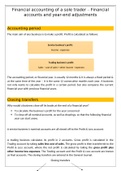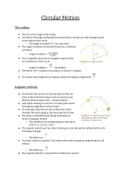Summary
Summary Grade 10 Accounting: Financial statements and year-end adjustments
I am really passionate about accounting. These notes will really help you to understand the theory behind the work that you are doing. It will enable you to see the bigger picture, and surely improve your grades.
[Show more]




